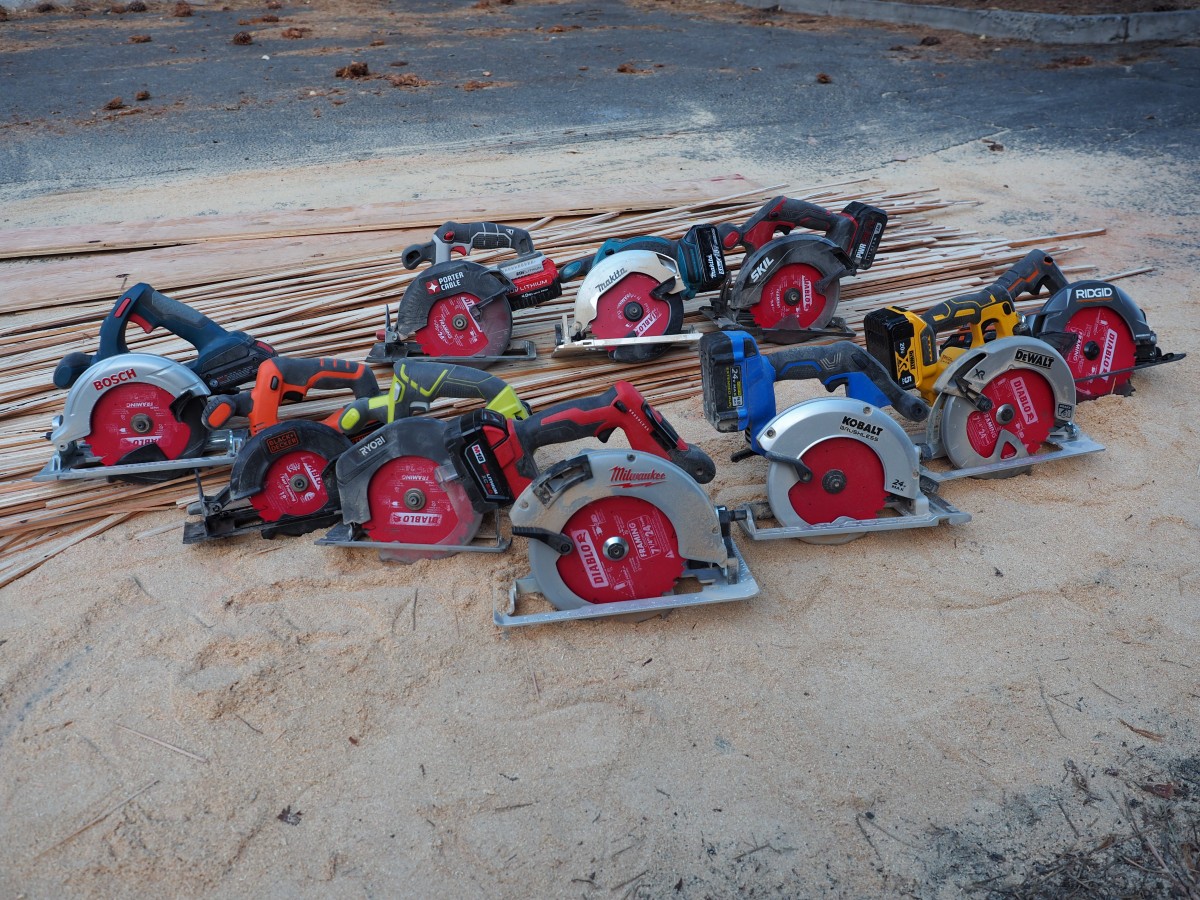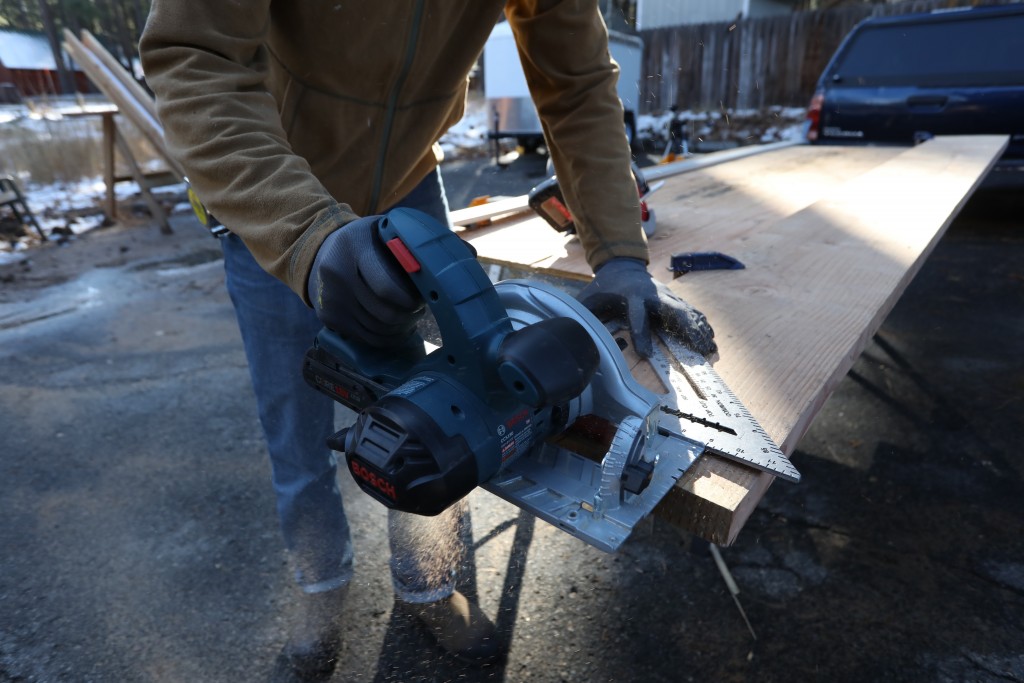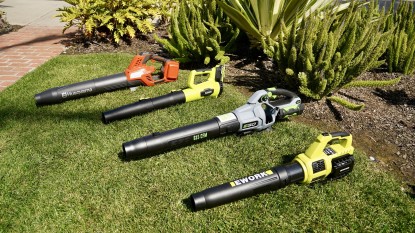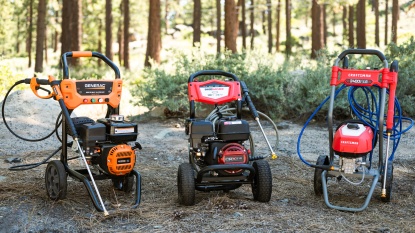If you're reading this article, you've probably heard some of the hype about cordless circular saws. Maybe your neighbor was showing off his new saw last weekend, or your buddy at the job site was making quick work trimming rafter tails while you were lugging around your old plug-in saw. Whatever piqued your interest, there is a fair amount of information to digest before deciding on a saw to buy. While there are a few different types of cordless circular saws on the market, this article focuses on direct drive circular saws — what are commonly referred to as side-winders. This distinction narrows the focus, but there are still plenty of options to consider with side-winders. Don't sweat it though. We have researched, bought, and tested the most popular saws on the market. All your questions about saw blade dimensions, blade-left vs. blade-right saws, brushless vs. brushed motors, and more, will be answered.
Background
If you cut your teeth in construction on the west coast then you probably never thought twice about your first circular saw purchase. It was a blade-left worm drive. Conversely, those folks that apprenticed east of the Mississippi most likely learned their craft with a direct driver (side-winder) saw. Given these professional preferences, it shouldn't be surprising that they have trickled down to the DIY folks. There is plenty of speculation, and not a small amount of ribbing, for the reasons this split took hold. However, these distinctions have begun to fade as the development of dependable cordless direct drive circular saws are breaking down this long-standing convention.
While worm drives do offer the user a narrower profile and a longer reach due to the position of the motor and handle, the claims of greater torque for demanding cuts no longer carries as much weight. Many of the modern cordless direct drive saws can handle full depth the plunge cuts, hardwoods, and thick sheeting that were previously the domain of plug-in worm drive saws. Moreover, cordless direct drive saws are a fraction of the weight of worm drives, and you don't have the extension cord tying you down. For these reasons, many dyed in the wool worm drive users are rethinking their options.
Anatomy of a Cordless Circular Saw
For those readers who are new to the nomenclature of circular saws, the following is a list of terms that will make discussions of saws easy to follow.
- Arbor: the shaft extending from the saw motor and that the blade is mounted.
- Bevel/ cutting angle adjustment knob: the set screw that releases/ secures the bevel of the shoe. Many saws use a lever instead of a knob.
- Blade guard lever: lever or arm attached to the lower blade guard that allows the user to safely retract the guard.
- Bolt clamp: machine bolt and washer that secures the blade to saw spindle.
- Cutting depth adjustment knob: The set screw that releases/ secures the shoe to extend or retract to control the depth of the cut.
- Fore/ auxiliary handle: the pommel-like handle at the front of the saw used to stabilize the saw when cutting.
- Lower blade guard: the spring-loaded, retracting guard that covers the portion of the blade making cuts. The lower guard protects both user and blade by retracting when the blade is pushed into the cut and sliding back over the blade when the cut is complete.
- Safety switch: the spring-loaded button that must be depressed to release the saw trigger
- Shoe, plate, foot: the flat portion of the saw that rests on the board being cut. The shoe orients the angle and the depth of the blade and provides a guide for the cut.
- Trigger: spring-loaded on/ off button that activates the saw motor.
- Trigger handle: the main grip on the saw where the safety and trigger switches are located.
- Upper blade guard: fixed blade cover that protects the user and blade.
Regardless of what your background with circular saws happens to be, the above descriptions of saw components, combined with the following step-by-step breakdown of key considerations, will make selecting the right cordless circular saw as easy as one, two, three.
Step 1: Saw/Blade Size
Direct drive saws come in a number of saw blade sizes. Typically, these range from 5 1/2" to 7 1/4". The smaller sized models are often referred to as trim saws because the work they can do is limited by their reduced blade diameter and motors. These saws are a great upgrade from a hand saw because they are less expensive than their larger counterparts, and they are capable of tackling many DIY jobs around the house. When fitted with the appropriate blade, these saws are also great for professional finish work such as molding and baseboards where a full-sized saw would be overkill.
At the other end of the spectrum are the 7 1/4" saws that can be classified as framing saws. They have greater power, high amp-hour batteries, more torque, and larger blades. This means that these saws are better equipped to make plunge cuts, cross cuts, rip plywood, and cut more demanding materials such as laminated veneer lumber (LVL). These saws often come equipped with a rafter hook. This feature is a great convenience as the saw can be kept close regardless of where the work is being done. As you might imagine, the increase in performance comes with an increase in price. These saws are designed for heavy use, so they are a good fit for dedicated woodworking hobbyists and professionals.
The saws in the middle blade diameter category are more general. They can do all the tasks of a trim saw but are more expensive and bulkier. They can also do most of the tasks of the framing saws, but lacks the larger blade, power, and framing hook. These saws will satisfy most of the DIY folks but are a little underpowered for heavy use.
Step 2: Blade-Left or Blade-Right Saws
Perhaps the most confusing part of direct drive saw selection is the blade-right or blade-left decision. Sometimes these design configurations are referred to as left or right-handed saws. As we will show, this is inaccurate. Blade-side is a preferential decision based on the kinds of cuts you are going to make most often, what kind of circular saw you have used in the past, as well as safety concerns. The following discussion is predicated on the user being right-handed. If you're left-handed, apply everything said about blade-right saws to blade-left saws and vice-versa.
Circular saws have the majority of the shoe under the motor and handle, with only a fraction of the shoe to the outside of the blade. When making cuts with a circular saw, we ideally want the widest portion of the shoe to be resting on the working portion of the board. This is because the shoe provides stability and thus accuracy along the length of the cut. It also establishes the angle of the cut in relation to the blade, thus making its even contact with the board all the more important. Some cuts allow this, and others do not — it's largely the result of blade orientation.
To put this concept into a practical scenario, let's consider short crosscuts on a 2x12 where we want to take an inch or so off the end of the board. The user is right-handed.
Blade right saw:The user is in the safest possible position. They are not crossing the cutting plane, and the sawdust is discharging away from the body. However, the user's ability to monitor the blade on the leading edge of the cut is limited by the pommel grip and the upper blade guard. Some models account for this and deliberately create a clear line of sight, but not all of them.
Blade left:In this scenario, the user's arm crosses the cutting plane, and their body is in the path of discharging sawdust. More importantly, the likelihood of making a square cut is reduced considerably as the majority of the shoe is unsupported. However, the user's line of sight to the leading edge of the blade is unobstructed.
As demonstrated, there are pros and cons to both blade orientations. It simply comes down to experimentation, preference, and careful saw selection. Keep in mind, the points made above are just a few of the considerations that factor into a blade-left or right decision. Experienced carpenters will point out that one can't always access both sides of a board to mitigate the deficiencies of one blade orientation or the other. More importantly, lines of sight — both on the inside and outside of the blade — are often far more important than the orientation of the blade.
Step 3: Brushless vs Brushed
If you pay any attention to the electric tool market, then you have likely heard of brushed motors. These motors have been the standard for electric tools for many years because they are simple and inexpensive. However, in recent years brushless motors have become more popular as their cost has come down. Before going into the pros and cons of both motor types, let's first explain what a brushed motor is so that the advantages of the brushless variety will be clear. The following is a simplified explanation of the two motor types.
Brushed motors use permanent magnets (polarity DOES NOT change) and electromagnets (polarity DOES change). The permanent magnets are fixed to the outside of the motor and have opposing polarities (N/S). Similarly, the two sides of the electromagnetic coil have opposing polarities. However, the polarities of the coil switch depending on where they are in their revolution. The ends of the coil are connected to a split commutator shaft, one end to a side. The motor's two namesake brushes are in contact with the commutator, each to a side. The brushes carry opposite charges (+/-) that carry over to the coil. When the brushes are charged, so too is the coil, effectively turning it into a magnet. The polarization of the coil causes it to revolve a half turn in response to the force of the fixed magnets. This half-turn reverses the coil's charge because the two sides of the split commutator are now in contact with the oppositely charged brush. This mechanical charge reversal repeats with every half-turn of the coil, producing one-half turn after another in a seamless revolution.
Phew! We made it through the electrical engineering lecture. If you're still a little hazy on the details, that's okay. The important takeaway here is that the rotating commutator is in constant contact with the brushes. This is a source of friction that produces a loss of energy and maintenance issues. As the name implies, brushless motors remove the contact point. However, unlike the completely mechanical brushed motor, the brushless variety requires a sensor to time the polarity changes in the electromagnets driving the motor.
Given the performance and cost differences between these two motor types, we recommend brushless tools to professionals and heavy use woodworkers. These are the user groups that will recognize and appreciate the benefits that the more expensive brushless tool provides. Conversely, we don't recommend spending a bunch of extra money for a brushless tool if you're a casual user such as a homeowner tackling small projects on the weekends. That said, if you can afford it, the brushless models often have many of the ease of use features that we find to be quite helpful to the inexperienced user.
Conclusion
There is a lot to think about before purchasing a cordless circular saw. This decision revolves around blade-size and motor power, whether you want a blade-left or blade-right configuration and if the amount of work you are going to do with the saw. However, if you think about the kinds of tasks that you will most often be using the saw for, the field of candidates narrows pretty quickly. With the exception of trim saws, the range of prices for these products is reasonably narrow. So, it's possible to error on the side of getting a larger saw that you can grow into without breaking the bank. We hope that you have found this article helpful and informative as you navigate the cordless saw market.











